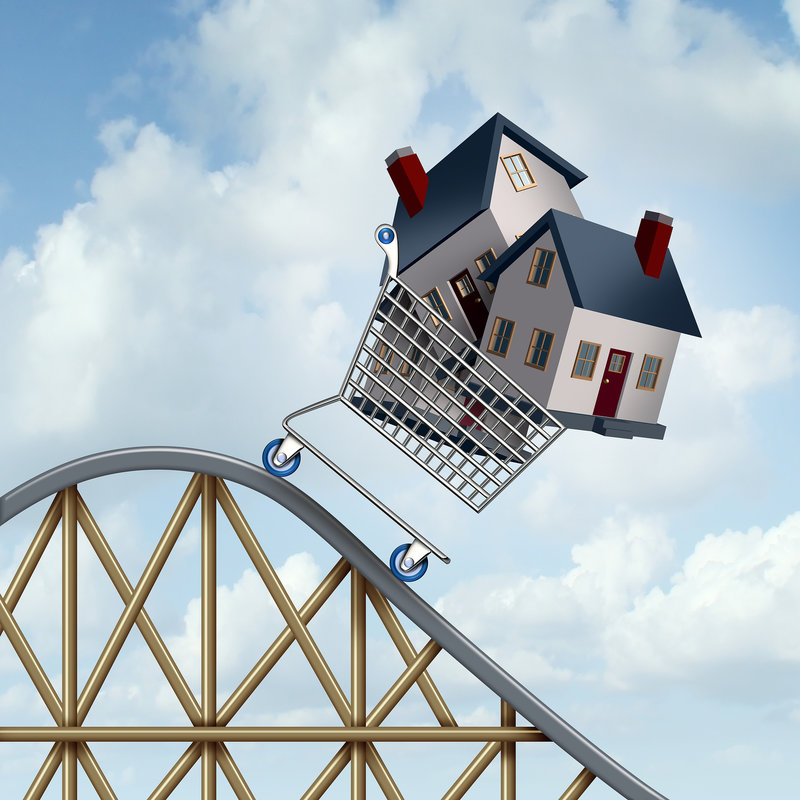
When shopping for a mortgage, have you noticed how much lower the rates are for a variable mortgage than a fixed?
For example, as of this writing, the average 30-year fixed-mortgage rate is 3.69 percent, while the average rate for a 5/1 adjustable rate mortgage, or ARM, is 3.09 percent, according to BankRate.com.
Despite this, many borrowers shy away from ARMs, based on the horror stories they read in the media or hear from friends and family.
Now, we aren’t mortgage experts, but we know plenty of them. Here are some things to consider about the adjustable rate mortgage that they want you to know about.
What Is An Adjustable Rate Mortgage?
The ARM is a mortgage loan program with a fixed rate for a pre-determined amount of time. After that, the rate may vary, either up or down, depending on which major mortgage index it is tied to (MTA, COFI or LIBOR).
A popular ARM is the 5/1, where the 5 means that the loan carries a fixed rate for the first five years and the 1 is the number of annual adjustments you may expect.
The second number, by the way, doesn’t always indicate this. “ … there is no set formula defining what the second number indicates,” cautions the staff at Investopedia.com.
ARMs Aren’t Scary, If You Understand Them
The Great Recession: that was one rough period we went through from December 2007 to June 2009. In fact, it’s considered our economy’s “largest downturn since the Great Depression,” according to the experts at Investopedia.com.
The housing crisis hit Americans hard, zapping their home equity. Those who bought their homes with little- or no-documentation “liar loans,” with ARM products, were particularly hard-hit.
Since the lenders pretty much disregarded whether or not the borrower had the ability to repay the loan, and handed them out like candy, millions of homeowners found themselves with a mortgage payment that skyrocketed just as they were laid off from their jobs.
Unemployment checks can be stretched only so far – so, naturally, with falling home values, when the adjustable period on their mortgages kicked in, many homeowners bailed, walking away from their homes.
Today, proof of the ability to repay a loan is the new norm in the mortgage industry.
But the ARM’s nasty reputation remains. In fact, CNBC‘s real estate correspondent Diana Olick claims that “A wide swath of borrowers today may be paying far too much on their home loans, simply because they are overly cautious.”
It’s a pity, however, because the ARM offers a valid alternative to the fixed rate mortgage for many homebuyers.
An ARM May Be The Ideal Solution When Interest Rates Rise
Funny how myths persist, right? No, the iconic “Welcome to Las Vegas” sign and, indeed, the Las Vegas Strip aren’t located in the City of Las Vegas, Mozart did not compose “Twinkle, Twinkle Little Star” and Abner Doubleday didn’t invent baseball.
Many Americans are under the misconception that when interest rates are on the rise, the adjustable rate mortgage is even riskier. Matt Weaver, with Finance of America Mortgage, however, says otherwise.
“ARMs are more attractive when 30-year interest rates increase,” he tells Olick.
This is because most ARMs carry caps, which limit how much the interest rate can change during the adjustment period. So, even if rates were to skyrocket, your rate can only go so high.
On the flipside, it’s probably not a good move to go with an ARM when mortgage rates are low, according to Matthew Frankel at MotleyFool.com.
“Simply put,” he says, “with interest rates still just above record lows, the probability that rates will be lower once the initial teaser rate expires is not good.”
At current low rates, “30-year fixed-rate mortgages are cheap enough that it’s simply not worth taking the risk of a big increase in the mortgage payment a few years down the road,” he concludes.
ARM Rates, At First Glance, May Not Appear Much Lower Than Fixed Rates
There is a potential savings from $10,000 to $20,000 with an ARM over a jumbo loan, according to Navy Federal’s Katie Miller.
“That’s enough money for a down-payment on a car, or part of your child’s college tuition.”
One way to learn how much you might save is to use an online fixed vs. adjustable rate mortgage calculator.
Who Should Consider An Adjustable Rate Mortgage
The ARM is an inexpensive way “for borrowers who don’t plan on living in one place for very long to buy a house,” say the experts at BankRate.com. And, according to the National Association of Realtors, the average time a homeowner lives in a home before selling, varies by age group.
Millennials, for instance, will typically sell their homes within five years of the purchase, whereas older Americans tend to stay put, on average, for 13 years.
The ARM may also be a good choice for the borrower who expects his or her income to increase before the adjustment period kicks in. Then, there are those “borrowers who are willing to bet they can invest their mortgage savings for a greater return elsewhere,” according to Jeff Brown at MarketWatch.com.
Weaver warns, however, that education is paramount for borrowers considering an adjustable-rate loan.
Since they understand your current financial situation, your best counsellors include your financial planner, accountant or lender.
Learn more about the adjustable rate mortgage, its risks and rewards, at consumerfinance.gov.